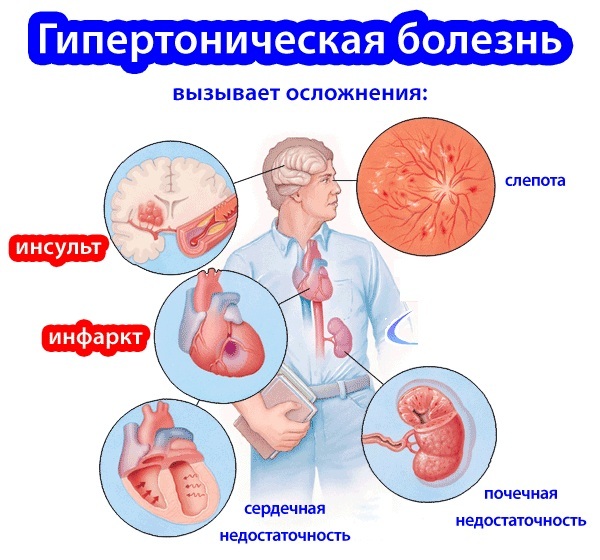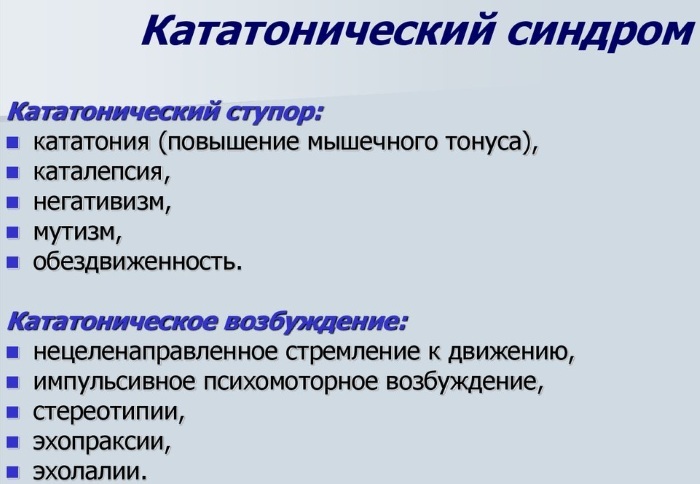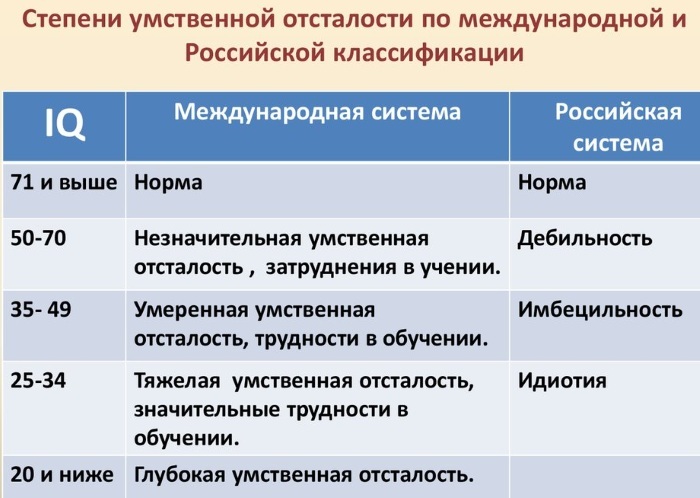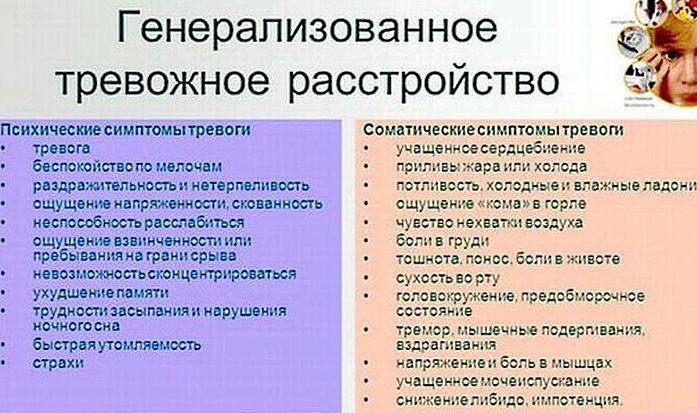Psychosomatic diseases - the medicine under study and psychology group of disease states, the causes of which are due to the human psyche the occurrence of somatic abnormalities.
Treatment of disease states requires an understanding of their complex treatment of both mental and on physiological level, which helps to determine the methods of treatment of psychosomatic disorders.
The content of the article:
- 1 What is psychosomatic illnesses
- 2 Types of psychosomatic diseases
- 3 Symptoms of psychosomatic diseases
- 4 Theories and models of psychosomatic diseases
- 5 The physiological mechanism of psychosomatic diseases
- 6 Diagnosis of psychosomatic diseases
- 7 When to see a doctor
-
8 Methods of treatment of psychosomatic diseases
- 8.1 Medications
- 8.2 Traditional methods
- 8.3 Other methods
- 9 possible complications
- 10 Video of psychosomatic diseases
What is psychosomatic illnesses
Psychosomatic disorders - a group of diseases, the causes of which are associated with both mental disorders, occurring at the physiological level, and physiology abnormalities, manifested at the level of the psyche person. Treatment of psychosomatic diseases is based on the study of the interaction of the human body subsystems.
The concept of "psychosomatic medicine" appeared at the beginning of the XIX century. Despite the fact that the medical specialties began to study since the time of Hippocrates. In science, the term "psychosomatic" entered the German physician Johann Haynrot in the XIX century., But actively studied phenomenon was only in the XX century. thanks to the scientific activity of psychologists and psychoanalysts such as:
-
Helen Flanders Dunbar - the founder of psychosomatic medicine and the concept of "personality profiles", which defined the personality traits of a person as the basis of psychosomatic disorders. These features, according to Dunbar, form a certain vulnerability human organs and represent individual personal profile.

- Franz Gabriel Alexander - one of the founders of psychosomatic medicine, actively explore the connection of physiological and mental level of the human body. American doctor also considered the founder of the psychoanalytic criminology.
- Jeliffe Smith - American neuroscientist and psychoanalyst, considered one of the founders of psychosomatic medicine. Smith is actively studying the impact of mental factors in the emergence and development of somatic diseases. Researcher also engaged in the development of ideas and methods of psychosomatic medicine and psychosomatic medicine.
Psychosomatics at the very beginning of its development was considered mainly from the point of view of psychoanalysis. The theory talked about the negative impact of the depressed state of the body and a positive, anti-aging effects on the human body a sense of satisfaction and happiness.
Today there are many theories of the origin and development of psychosomatic diseases, based on the concepts of different schools of thought. But the basic current value is psychosomatic origin diseases occurring due to non-physiological characteristics of the human personality, which is particularly manifested by external factors.
Types of psychosomatic diseases
The most common classification of disease states based on the peculiarities of the symptoms, functional structure and specificity of psychosomatic connection.
According to this classification, the diseases are divided into 3 groups:
| group Name | Base disorders, disorders of the reason | Affected by physiological factors | Symptoms and disease |
| Conversion disorder | Diseases arise from unauthorized neurotic patient conflict; the patient complains of symptoms objectively missing | Voluntary motor skills and senses |
|
| psychosomatics diseases | The basis of the disease is experiencing internal conflict, manifested in the form of bodily reactions. Psychosomatics diseases accompanied by pathological changes in human organs | The impact of the disease on the physiology depends on personal predisposition that defines organs affected |
|
| functional syndromes | Basis syndromes -Violation function of individual organs and systems without their pathological disorders |
Syndromes affect:
|
|
Symptoms of psychosomatic diseases
Psychosomatic disorders, causes, and treatments which depend on the specific interaction mental and physiological levels of the human body, may occur in each patient differently.
A variety of clinical pictures psychosomatic disorders may include:
- dysfunction of individual organs;
- localized pain (headache, muscular, articular);
- cardiac arrhythmias;
- tachycardia;
- dizziness;

- disorders of the gastrointestinal tract (constipation, diarrhea, nausea);
- decreased libido;
- fatigue;
- general weakness, apathy;
- problems with the respiratory system, cough.
After working with a therapist, many patients report that their symptoms are exacerbated during emotional stress, stress and conflict. For conversion disorders characterized by loss of body functions.
Pain are more prone to women who mostly complain about:
- spasms of the respiratory system;
- loss of tactile sensations;
- psychogenic disorders of speech, hearing and vision.
mostly children and adolescents suffer from:
- nervous tics;
- urinary incontinence;
- wanton shouting, crying;

- palpitations;
- dizziness;
- fainting;
- nausea, vomiting.
Theories and models of psychosomatic diseases
| The name of the theory | author of the theory | The essence of the theory |
| The concept of "personality profiles" | Helen Flanders Dunbar | Somatic diseases develop as a result of psychological conflict and associated with certain human traits and patterns in the interaction with people. Dunbar has identified the following types of personality: 1. Coronary. Patients are prone to cardiovascular disease and different aggressiveness, irritability and cruelty. Cause of the disease - the suppression of aggression because of personal and social restrictions. 2. Hypertensive. Patients tend to a constant feeling of guilt for their own hostility, the need for approval from others. 3. Allergic. Patients are characterized by high anxiety prevailing unmet need for love, care and support. In patients experiencing internal conflict desire to gain independence and to be dependent. |
| The concept of alexithymia | Pierre Marty, Michel de M'Yuzan | The concept is expressed in the patient's inability to verbally express their feelings and emotional distress as a result of which the person becomes prone to psychosomatic illnesses. Alexithymia considered combination of features that characterize the individual storage mentality predisposing to disease |
| The theory of de- and resomatizatsii | M. Shur | At the heart of this concept is the concept of regression - return from a higher to a lower stage of development. Shur said that in infants elements of mental and somatic inextricably linked to each other, but with the development of the body and the child's personality, disturbed direct communication between these subsystems. According to Alex, because of the unstable state of the person, the person returns to the early stage of development, when the body to react to changes of consciousness, which is why there are psychosomatic illness |
| Model of rejection of faith in the future | George Arthur Engel and Schmale | The model connects unnerved the human immune system, due to which it becomes predisposed to diseases, with "psychological rejection of the future." Engel and Schmale explained his model so that even before the occurrence of disease in patients were determined complexes associated with a sense of loss, self-doubt and an inability to believe with optimism in his own future. Hopelessness, bitterness and pessimism affected the decrease in immunity |
| The theory of psychodynamic conflict | Franz Alexander | Alexander first termed "vegetative neurosis," meaning the physiological responses psychological state. The theory of psychodynamic conflict says about the origin of diseases as a result of internal conflicts, which are formed in the patient's childhood. With age conflicts external condition transformed into the interior, and their inability to resolve provokes psychosomatic diseases |
| The theory of stress | G. Selye | G. Selye stress meant as a general adaptation syndrome, which is a response of the organism to the requirements it outside. Scientist noted adaptive value of stress as adaptation of the organism by mobilizing internal resources to permit the stressful situation. G. Selye drew attention to the relationship of somatic diseases with the body's response to stress. With constant exposure to the source side of stressful situations a person goes into a stage of "passive" emotions, accompanied by depressive and hopeless condition, when the "discouraged." Such a chronic condition develops into a psychosomatic illness |
The physiological mechanism of psychosomatic diseases
Mechanisms of basic psychosomatic diseases:
-
Arterial hypertension. If hypertension is characterized by prolonged and persistent increase in blood pressure - the disease is likely to have hereditary character. From the point of view of the theory of psychosomatic stress, hypertension is the consequence of intrapersonal conflict between aggression, desire to achieve a high social status and the desire to be dependent on the important and PEPs. Insufficient adaptation of the type of individual to stressful situations is reflected in the form of psychosomatic diseases arising.

Cause of hypertension is often a psychosomatic illness. Treatment in this case requires to revise their view of the world - Bronchial asthma. For people with asthma are characterized by increased anxiety often hysterical personality traits and susceptibility to hypochondria. The disease is characterized by an internal conflict between the human need for love, care and protection, and fear of intimacy and dependency. Often people with asthma patients, grew up in families where the vast initiative of the child, and his every action and emotional expression is strictly controlled.
- Organic and functional myocardial damage. Studying the phenomenon of ischemic heart disease has led to the identification of certain personality traits in patients:
- haste;
- restlessness;
- a heightened sense of responsibility;
- diffidence.
-
Gastric ulcer and duodenal ulcer. One of the theories of the causes of stomach ulcers in terms of psychosomatic patients identifies an unmet need for love and support. Inability to obtain care and affection expressed in the increased secretion of the stomach, which leads to development of ulcers.

- Excessive activity of the thyroid gland production of thyroid hormones. Hyperthyroidism is often preceded by a heightened sense of anxiety and excitement, which leads to increased secretion of the thyroid gland. Psychodynamic theory suggests that childhood patients with hyperthyroidism is different dependent on the mother, the fear of loss of love. Dependency needs in adulthood is expressed in the desire for self-assertion, which leads to constant stress and fear to show their weakness.
- Diabetes. There is evidence that speak of the causes of diabetes mellitus in the intrapersonal conflict, which the patient tries to resolve the act of eating. Replacing the need for love, the need for food, a person is developing steadily increase in serum glucose that weakens secretory function clusters hormone-producing (endocrine) cells, which are mainly in the pancreatic tail gland.
Diagnosis of psychosomatic diseases
Psychosomatic disorders, causes, and treatments which depend on individual characteristics and predispositions of the individual can be diagnosed in two ways - a diagnostic conversation and psychological testing.
Diagnostic interview helps to identify the history, which is then analyzed by a doctor. The therapist thus identifies the connection between the survey and physiological events described by the patient.
Talk with your doctor is also required for the formation of a friendly relation with the patient, helping to explore its real conditions of life, attitudes and actual problems.
In the diagnostic interview specialist tries to identify the following information:
- the attitude of the patient to their own state;
- evaluation of the importance of the disease to the patient how his fortune affects the daily life;
- the general health of the patient, prior myocardial infarction disease;
- a possible genetic predisposition to the disease;
- the behavior of the patient, his score in terms of possible further psychotherapy;
- especially non-verbal response of the patient to certain topics, events, situations;
- divided whether the patient has their problems with others or close friends.
At the end, the doctor should already analyze the relationship psychosomatic disorders. As a result, the expert assesses the patient's readiness for treatment and develops therapies.
Simultaneously with diagnostic conversation is often complemented by information about the patient by means of special tests. The best known test methods are questionnaires, the most common test SMIL (MMPI) and questionnaire R. B. Cattell.
Also, for determining conflicts intrapersonal used Thematic Apperception Test, which is a set of tables with 30 black-and-white images on a light matte cardboard. The task of the subject - to make a narrative stories with pictures shown in 20 tables.
Significant dissemination of projective methods is test frustration Rosenzweig. It identifies the patient's response to situations of failure and his willingness to find a way out of the situation. Surveyed offered some situations, in each of which there is an obstacle.
Also, patients are encouraged to events where it is somewhat accused. Situations with obstacles and charges are interconnected and determine the patient's response to frustration.
Pragmatic questionnaires are also often used for the diagnosis of psychosomatic diseases. For example, Giessen questionnaire of psychosomatic complaints. Here, patients are encouraged to answer the 57 questions that were recorded as a result of individual complaints, complaints systems and determine the total assessment of their intensity.
Using the diagnostic methods of psychosomatic disorders, the therapist should detect as many nuances and details of the disease and the mental condition of the patient.
It must be remembered that the choice of test depends on the individual characteristics of the patient, and correct construction diagnostic interviews with selected right personality questionnaire will give the most objective and accurate picture of the flow patient.
When to see a doctor
Start treatment and therapy with the identification of the causes of psychosomatic diseases should first and foremost a doctor psychotherapist. Psychosomatic disorders can be divided into several large groups depending on the symptoms, so the list of possible diseases having a mental level of consciousness is very wide.
For doubting the validity of recourse to a psychologist or therapist there is a list of problems that may indicate psychosomatic disturbing the disease:
- symptoms begin magnifies in certain circumstances, or in the presence of certain people;

- doctors say about the normal operation of the body, but the symptoms just continue to manifest themselves;
- increased anxiety when dealing with people, which indicates the general level of stress and the presence of human mental problems;
- the patient himself feels the dependence of disease from their mental health.
It must be remembered that the qualitative diagnosis of the disease must be carried out as a psychotherapist, as specialists treating physiological symptoms. Complex work with psychological and medical support will help a person get rid of psychosomatic illnesses.
Methods of treatment of psychosomatic diseases
The most known method is the treatment of psychosomatic diseases work with psychologists and therapists. The method is particularly effective because of the orientation of the specialists on the main cause of the disease - mental problems of man.
The following methods of psychotherapy are used most often:
- body-oriented;
- cognitive behavior;
- Gestalt therapy.
Many studies distinguish cognitive-behavioral therapy, which is capable of at the time of short-term treatment (8-16 sessions), to cure the patient's somatic symptoms and generally seize his mental and physiological state.
There is also the pharmacological treatment of psychosomatic disorders. They are mainly aimed at reducing anxiety and depression decrease in the patient's condition.
Antidepressants are appointed only by the attending physician; independent application with ignorance permissible doses have a negative impact on health. The effectiveness of the method is evaluated only with the simultaneous treatment of a therapist, who appoints certain types of medicines to individual dosages.
Traditional methods for the treatment of psychosomatic diseases are also used in conjunction with psychotherapy. Often the recipes are in addition to pharmacological methods, but their main function - to ease the symptoms for disturbing the disease.
Not all popular treatments will effectively act on the body of the patient, so a person must first of all discuss the method of traditional medicine with the expert.
Medications
Medications are often prescribed a therapist as part of treatment of psychosomatic diseases. Drugs, particularly their adoption and dosage are appointed by a specialist, who picks up the drugs on the basis of the individual patient.
| preparations | when used | Possible side effects |
| Tranquilizers (hydroxyzine, Grandaxinum, nitrazepam, clonazepam, Medazepam, frizium (clobazam), phenazepam) |
|
|
| Antidepressants (sertraline, fluoxetine (Prozac), citalopram) | Depression, anxiety, autonomic disorders and hypochondriacal |
|
| Neuroleptics (haloperidol, droperidol, promazine (propazine), thioproperazine) | A disorder in which the disease internal organs acts as a traumatic factor, A repeating occurrence of physical symptoms, the diagnosis of which does not confirm the presence of disease | Allergic reactions, movement disorders |
| Nootropics (Nootropilum, pikamilon, Cerebrolysin, encephabol, thyroliberin) |
|
sleep disturbance, decreased seizure threshold |
Traditional methods
Psychosomatic illness, causes and treatment which reveals only a qualified psychotherapist, They can be treated with folk remedies that are used only as an adjunct to drug drugs. Traditional recipes are prescribed depending on the disease.
The best-known recipes for the treatment of major diseases of psychosomatic:
-
Gastric ulcer and duodenal ulcer. Famous folk recipes treat peptic ulcer disease include potato, carrot and cabbage juice. Potato juice is produced from vegetable rubbed, pressed through cheesecloth. The mixture is taken to 20 g before eating; over time, the dosage is increased. Carrot juice is prepared and adopted in the same way. Particular attention should be paid to the cabbage juice, which is accepted by a few glasses a day and take the course about 2 months.

- Hypertension. One of the most effective folk remedies for hypertension is the tincture of red pine cones. It is obtained by the infusion of washed under running water and poured into a quart jar filled it with vodka or 40-degree alcohol red cones collected in the summer. Infuse bumps need 3 weeks, before their use must strain the resulting dark red tincture. Half an hour before the meal desirable drinking one teaspoon tinctures.
- Arthritis. One of the popular ways known arthritis is reception of cider vinegar. If you have problems with the stomach is better not to use this recipe. The beaker with water is necessary to add 1 hour. l. vinegar, which is best taken before meals several times a day. The course of treatment lasts for more than a month. Also painful joints often treated potatoes. Green with vegetable should be washed and crushed without peeling. The resulting mixture was heated in water at 38 degrees and placed on joints compress, which is desirable to leave overnight.
- Lung disease. The most popular folk recipe with lung disease - potato broth. It is necessary to prepare vegetable broth, add a spoonful of butter and inhale the vapors resulting mixture. It is also possible to prepare money for needles basis, spruce and pine. The plant must be washed and pour 400 ml of water. About half an hour and the liquid should be boiled, drain boiled agent, apply it 3 times a day for 1 st. l.
Other methods
Psychosomatic disorders, causes, and treatments which are identified through qualitative diagnosis of the attending specialist may also be cured by using other non-standard methods.
- Phytotherapy. In medicine, this therapy is rare, despite its proven effectiveness. The most often used in psychosomatic diseases hawthorn extracts and tinctures (30 drops 3 times a day before meals) that help reduce side effects of drugs. Also refers to the herbal tincture lily 70% (1:10) alcohol to treat heart disease, in valerian tablets (1-2 tablets 2-4 times daily) and other herbs, non-addictive and by actions.
-
Yoga. The method aims at forming a mental resistance to stress external influences.
 The main components of yoga, which should take into account patients psychosomatic disorders:
The main components of yoga, which should take into account patients psychosomatic disorders:
- the correct execution of asanas that focus on the body and help get rid of psychological stress;
- proper nutrition;
- promoting a healthy outlook, positive attitude and self-belief.
3. Hobbies. Creativity is a known way to overcome stress conditions and reducing anxiety. In addition, interests and hobbies to help enjoy the selected class, which has a positive effect on the overall mental state of man.
Therapists often advise patients to find your favorite activity, and to express them through their feelings and gain new skills, increasing self-esteem and self-confidence.
possible complications
Complications may arise as a result of numerous analyzes performed in order to find the causes of disease. Sometimes become addicted to painkillers or sedatives. Many medical institutions claim that adversely affect the condition of the patient is also bad, not trusting relationship with your doctor.
If the patient does cease to pay attention to the problem and will continue to suppress emotions, not working through them with a specialist, psychosomatic diseases will rapidly deteriorate. The human body can not be deceived; unexpressed feelings and emotions will manifest the body signals that need to be addressed.
Psychosomatic illness reflect the internal state of the human mind. Identifying their causes already a step on the way to their treatment, which should only take place under the supervision of psychotherapists. A comprehensive work on the mental and physiological level, the body will help to get rid of disturbing the disease and improve overall health.
Author: Anna Fleyman
Registration of the article: Vladimir the Great
Video of psychosomatic diseases
About Psychosomatics. How to recover:



